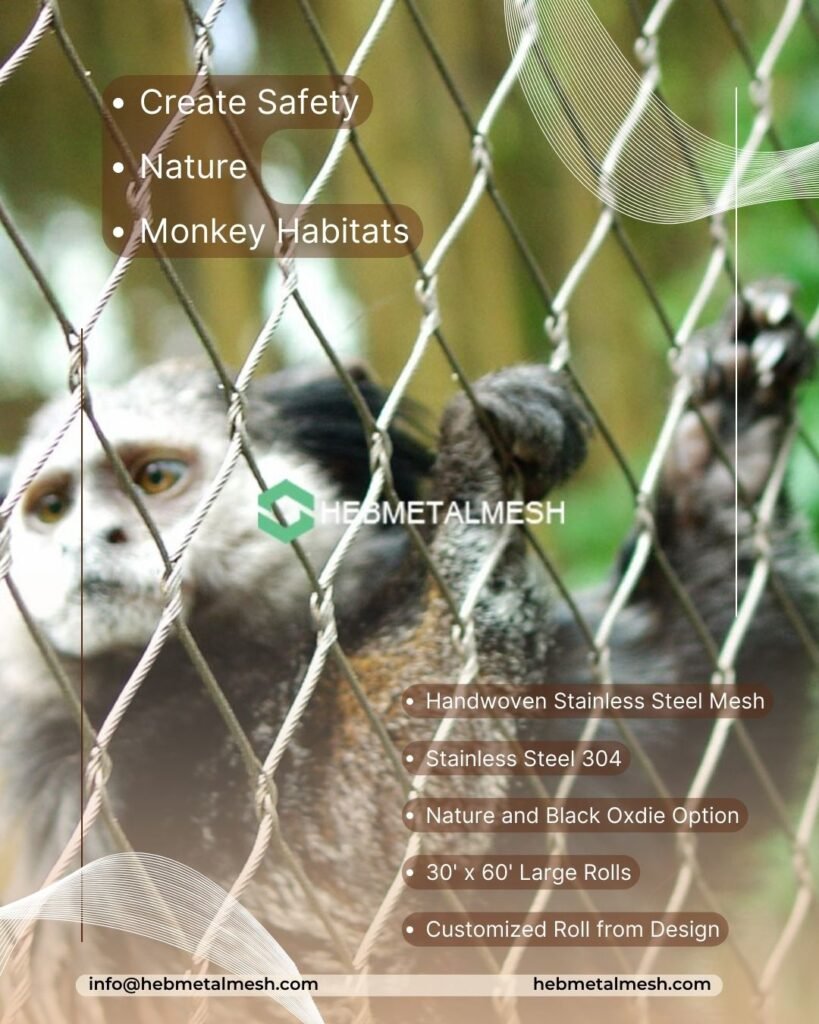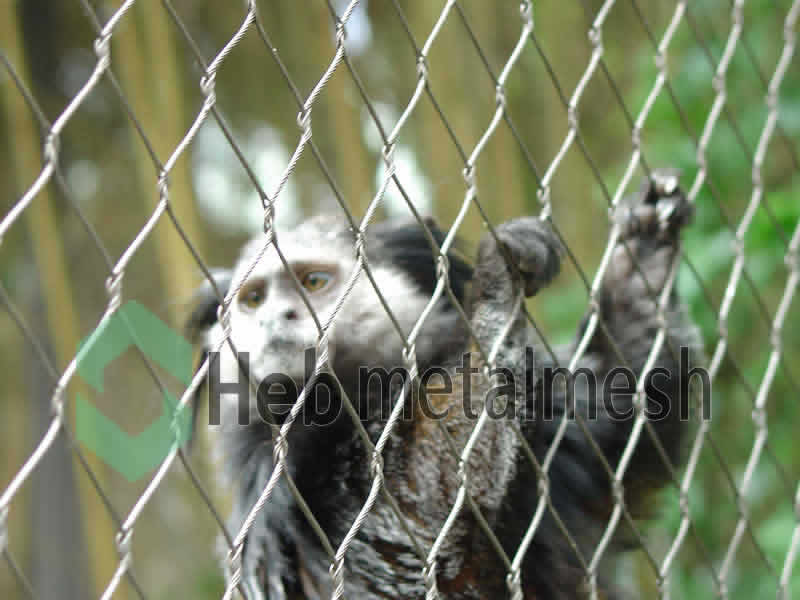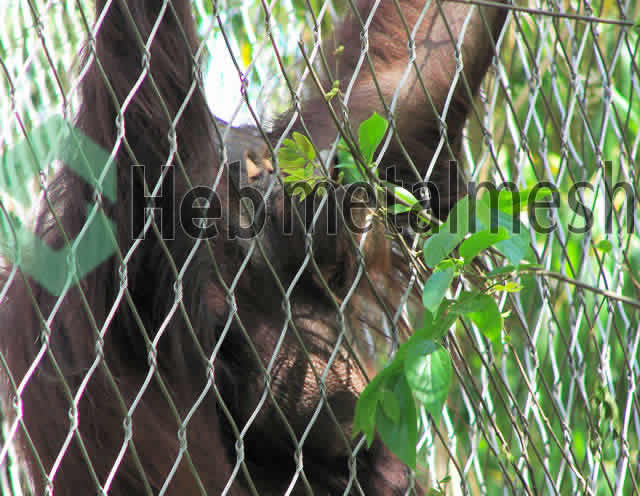Understanding the Necessity of Monkey Cages
Monkey cages play a crucial role in the management and conservation of these intelligent primates within zoos and wildlife parks. As complex creatures, monkeys require environments that not only safeguard their well-being but also allow their natural behaviors to be expressed. The design of these enclosures is essential in providing a balance between the safety of the animals and that of the visiting public. Moreover, these habitats can enhance the educational value of wildlife facilities, drawing visitors into the intricate world of primates.
First and foremost, the safety of both the monkeys and the visitors is paramount. Monkey cages must be constructed with durable materials that can withstand the strength and agility of these animals. Features such as reinforced glass and secure mesh ensure that the monkeys are contained without compromising their comfort and space. Additionally, carefully designed barriers help prevent direct contact between the monkeys and visitors, reducing the risk of injury or trauma to both parties. This dual focus on safety fosters a more reassuring environment for patrons, enabling them to appreciate the animals without posing a threat.
Furthermore, the design of monkey cages should aim to mimic the animals’ natural habitats, allowing them to engage in instinctual activities such as climbing, foraging, and socializing. Incorporating naturalistic elements such as trees, climbing structures, and water sources enhances the quality of life for the monkeys, promoting mental stimulation and physical health. By enriching their environments, zoos can fulfill their commitment to animal welfare while simultaneously providing an engaging experience for visitors. This approach not only educates the public about the behavior and needs of primates but also instills a greater appreciation for wildlife conservation.
In conclusion, the necessity of monkey cages extends beyond mere containment; they are vital in creating secure, enriching environments that benefit both the animals and visitors alike. By prioritizing safety and comfort, these enclosures can significantly contribute to the overall mission of wildlife preservation and education.

Choosing the Right Materials for Your Monkey Cage
When designing a monkey cage, one of the most critical decisions involves selecting the appropriate materials. The choice of materials significantly impacts not only the safety and comfort of the monkeys housed within but also the overall durability and aesthetics of the structure. Stainless steel emerges as one of the most favored options for constructing monkey cages due to its strength, resistance to corrosion, and ease of cleaning. This material ensures that the cage withstands the rigors of the environment, which is essential for long-term use.
In addition to stainless steel, mesh material often plays a vital role in the design of monkey cages. Different mesh sizes, such as 1”, 1.5”, and 2”, should be carefully considered when creating the enclosure. A smaller mesh size may prevent monkeys from escaping while simultaneously allowing for adequate ventilation and visibility. On the other hand, larger mesh sizes can facilitate better interaction between the monkeys and public visitors, enhancing the overall experience without compromising safety.
Furthermore, it is essential to assess the impact of different materials on the welfare of the monkeys. Materials that are easy to chew or harmful if ingested should be avoided. Coatings and finishes must not release toxic substances, which can pose health risks to the monkeys. Additionally, using materials that are non-porous aids in maintaining hygiene levels, reducing the risk of disease transmission.
Ultimately, the selection of materials for a monkey cage should prioritize durability, safety, and the ethical treatment of the animals. By combining high-quality materials, like stainless steel, with appropriate mesh sizing, not only does the longevity of the enclosure increase, but the well-being of the monkeys is also enhanced. A carefully constructed monkey cage can create a safe haven for these intelligent animals while allowing wardens and visitors to observe and interact with them comfortably and safely.

Designing the Perfect Monkey Habitat
Creating an optimal monkey cage is crucial for promoting the well-being of monkeys in captivity. When designing a habitat for these intelligent and social animals, it is essential to replicate their natural environment as closely as possible. A well-thought-out monkey cage should incorporate diverse climbing structures, enrichment tools, and secluded areas that cater to their natural instincts and behaviors.
First and foremost, the inclusion of vertical space is vital. Monkeys are naturally arboreal, meaning they thrive in environments where they can climb and explore. Tall structures, such as branches, ropes, and nets, should be integrated into the monkey cage design to facilitate climbing and create an engaging environment. The use of materials that mimic natural wood and foliage can also enhance the aesthetic appeal of the habitat, encouraging a sense of familiarity for the monkeys.
Additionally, enrichment tools play a significant role in a monkey’s quality of life. Items such as puzzle feeders, swings, and interactive toys can stimulate cognitive abilities and provide physical exercise. Incorporating foraging opportunities within the cage allows monkeys to search for food, simulating their natural behaviors and promoting problem-solving skills. This not only helps to combat boredom but also strengthens their overall mental health.
Creating secluded areas within the monkey cage is equally important. Monkeys are social creatures but often require personal space to retreat to when they feel stressed or threatened. Enclosed spaces, such as wooden boxes or natural dens, provide privacy and solace, enabling monkeys to manage anxiety and establish their boundaries. Carefully designed habitats that balance social interaction with retreat options lead to healthier, happier monkeys.
In conclusion, a thoughtfully designed monkey cage that mimics a natural habitat enhances the physical and emotional well-being of monkeys. By prioritizing climbing structures, enrichment tools, and quiet spaces, caretakers can ensure that these remarkable animals thrive in captivity.

The Case for DIY Monkey Cages: Pros and Cons
Building a DIY monkey cage can present numerous advantages for those who wish to provide an enriched environment for their primates while exercising creativity and cost-saving measures. One of the most significant benefits of constructing your own monkey enclosure is the potential for customization. A DIY project allows owners to tailor the size, layout, and materials of the cage to suit the specific needs of their monkey species. Each species has unique requirements for space, climbing surfaces, and safety, making a personalized approach highly beneficial.
Additionally, by managing the build process, owners have the opportunity to select high-quality, durable materials that meet safety standards and regulations. This direct involvement ensures that the structure can withstand the physical activity and behaviors of monkeys, which can be quite demanding. Furthermore, engaging in a DIY project can offer a sense of accomplishment and a stronger bond between the owner and their pet, emanating from the time and effort spent on creating a nurturing habitat.
However, the challenges associated with building a DIY monkey cage should not be overlooked. Ensuring that the enclosure meets all safety regulations can be daunting, especially for first-time builders. It is essential to consider factors such as the strength of the materials used, proper ventilation, and adequate escape-proofing to prevent accidents. Additionally, the potential costs can escalate quickly if the project requires frequent adjustments or if mistakes are made during construction.
Moreover, while DIY projects can often save money, unforeseen expenses may arise, leading to a budget that surpasses that of a pre-manufactured monkey cage. For individuals lacking the necessary skills or tools, purchasing a professionally made cage may ultimately be a more practical and safer solution. Balancing these pros and cons is essential for anyone contemplating a DIY monkey cage, ensuring the end result is both functional and suitable for a monkey’s lifestyle.
Safety First: Mesh Options for Monkey and Visitor Protection

When designing a monkey cage, ensuring safety for both the primates and the visitors is paramount. One of the most critical elements in achieving this is selecting appropriate mesh options. Mesh serves as a barrier that prevents escapes and protects individuals on both sides of the cage, while still allowing for visibility and interaction.
There are various materials used for monkey cage mesh, including stainless steel, galvanized wire, and high-density polyethylene. Stainless steel mesh is considered one of the best options due to its durability, corrosion resistance, and inability to be bent or broken easily. It provides a strong and secure environment for the monkeys while withstanding the various external factors inherent to animal enclosures.
Another widely used material is galvanized wire mesh, which is treated to resist rust and corrosion. This mesh offers a more cost-effective solution but may require regular maintenance to ensure that it remains safe and effective over time. Its visibility allows visitors to observe the animals closely, fostering an educational experience while keeping both parties safe.
The size of the mesh openings is equally important. Smaller openings help prevent the monkeys from escaping while ensuring that their curious hands do not reach through the mesh, potentially injuring themselves or reaching for visitors. A recommended mesh size could range from half-inch to one-inch openings, which provides ample space for visibility without compromising security.
Additionally, utilizing clear mesh options can create a seamless view of the monkeys, enhancing visitor interaction while maintaining safety. These transparent materials help create an immersive experience without obstructing the animals’ view or ability to engage with their environment.
Ultimately, careful consideration of the mesh options when constructing a monkey cage can significantly influence the safety and comfort of both the animals and the visitors, making it an essential aspect of the overall design strategy.
How to Ensure Monkeys’ Well-Being within Their Cage
Ensuring the well-being of monkeys in a cage setting is paramount for their health and happiness. A well-designed monkey cage should replicate aspects of their natural habitat, integrating essential environmental elements that promote physical and psychological well-being. One effective strategy is to incorporate natural materials, such as branches, rocks, and other organic structures. These elements not only provide a familiar setting for the monkeys but also encourage natural behaviors such as climbing, foraging, and social interaction.
In addition to natural elements, providing a variety of toys and climbing opportunities is critical for stimulating the monkeys’ minds and bodies. Enrichment activities, such as puzzle feeders and interactive toys, can alleviate boredom and encourage cognitive engagement. These enrichment tools foster an environment where primates can exhibit their natural behaviors, which is vital for their overall mental health. By regularly changing the layout and types of enrichment provided, caregivers can maintain a dynamic setting that intrigues the monkeys and promotes exploration.
Furthermore, maintaining cleanliness and ensuring proper hygiene in the monkey cage is crucial for the animals’ health. Regular cleaning routines help to prevent the buildup of waste and harmful pathogens, creating a safe and healthy living environment. This includes monitoring food and water sources, as well as ensuring that any debris or soiled bedding is promptly removed. Maintaining a structured cleaning schedule respects the primates’ habitat by minimizing stress and disruption in their routine.
Lastly, understanding the social dynamics of the group is essential in ensuring the well-being of monkeys housed together. Monkeys are inherently social creatures; therefore, it is vital to observe their interactions and ensure that their social needs are met. By fostering proper group dynamics and providing opportunities for socialization, caregivers can enhance the monkeys’ quality of life while within their cage.

Common Questions About Monkey Cages: FAQ
When considering the design and implementation of a monkey cage, prospective owners often have numerous inquiries. Addressing these questions can help ensure the safety and well-being of the primates in captivity. Here are some frequently asked questions about monkey cages.
The size of the monkey cage largely depends on the species and their specific needs. Smaller monkeys, such as tamarins and marmosets, may require a cage that is at least 4 feet in height, while larger species like macaques and capuchins should have cages that are significantly larger, ideally offering vertical space of at least 6 to 8 feet. Furthermore, it’s essential to allow for adequate horizontal space as well, with cage dimensions that allow monkeys to move freely and engage in natural behaviors.
Constructing a monkey cage requires careful planning and attention to detail. First, use durable materials that are resistant to corrosion and wear, such as stainless steel or reinforced aluminum. Ensure that there are no sharp edges or small openings that may pose a risk of injury. Additionally, proper ventilation is crucial to maintain a healthy environment. It’s advisable to consult local regulations or seek guidance from professionals with expertise in primate care to ensure your design complies with safety standards.
Environmental enrichment is critical for the mental and physical well-being of monkeys in captivity. Activities and items such as climbing structures, puzzle feeders, and various toys can significantly enhance their habitat. Additionally, rotating these enrichment items regularly helps maintain their interest and encourages natural behaviors. Including natural elements, such as branches or foliage, can further simulate an outdoor environment, essential for the overall health of the monkeys.
Understanding these common questions can guide prospective monkey owners in providing a safe, comfortable, and enjoyable living environment for their primate companions. Investing time and resources into developing the correct monkey cage setup is an essential step toward responsible ownership.
Legal Considerations When Building a Monkey Cage
When embarking on the construction of a monkey cage, it is imperative to understand the legal landscape surrounding the housing of primates. Different jurisdictions impose various standards and regulations that must be adhered to in order to ensure both the welfare of the animals and compliance with the law. Generally, housing monkeys requires specific permits that can vary based on the type of primate, the proposed structure, and its intended use—be it residential or for an institutional setting like a zoo.
Many states and municipalities have laws governing the ownership of exotic animals, including monkeys. These laws often dictate the minimum specifications that a monkey cage must meet. Regulations may require that the enclosure be constructed with secure materials, provide sufficient space for the animal to move freely, and include features to ensure the animal’s psychological well-being, such as climbing structures and hiding spots. Non-compliance can lead to severe penalties, including fines, confiscation of the animals, and even criminal charges.
Additionally, it is crucial to stay updated on any changes in state and federal laws that pertain to primate welfare. Organizations such as the U.S. Department of Agriculture (USDA) and various animal welfare groups provide guidelines that help inform safe and humane practices in monkey keeping. It is advisable to consult with legal experts or animal welfare organizations to navigate the complexities of these regulations effectively. Ensuring compliance not only protects the well-being of the monkeys but also reinforces the commitment to responsible animal stewardship and public safety.
In summary, understanding and adhering to legal requirements when building a monkey cage is vital both for the safety of the animals and for fulfilling one’s obligations as an animal caretaker. From permits to proper enclosure standards, thorough attention to these details is essential in undertaking such a significant responsibility.

Conclusion: Creating Safe Havens for Monkeys
Designing a monkey cage requires careful consideration of various factors that contribute to the safety, comfort, and overall well-being of the animals. Throughout this blog post, we have discussed the importance of creating enclosures that not only meet the physical needs of monkeys but also provide an enriching environment. Essential elements to focus on include proper space allocation, structural safety, and opportunities for social interaction, which are vital for maintaining healthy behaviors among primates.
In addition to practical safety measures, the aesthetic aspect of a monkey cage should not be overlooked. Incorporating natural elements and providing climbing structures can help replicate the monkeys’ natural habitats, fostering a sense of security and comfort. This attention to detail not only enhances the living conditions for the monkeys but also enriches the viewing experience for visitors, creating an engaging atmosphere where education about primate care can thrive.
It is also crucial to recognize that the design of a monkey cage is not a one-time process but rather an evolving endeavor. As research on primate behavior and welfare advances, adjustments may be necessary to ensure the enclosure continues to meet the evolving needs of its inhabitants. Regular assessment of the conditions within the monkey cage, along with feedback from animal care staff, can lead to improvements that promote the health and happiness of the animals. By maintaining a deep commitment to animal welfare, caregivers and designers can create spaces that not only protect monkeys but also celebrate their complexity and vitality.



